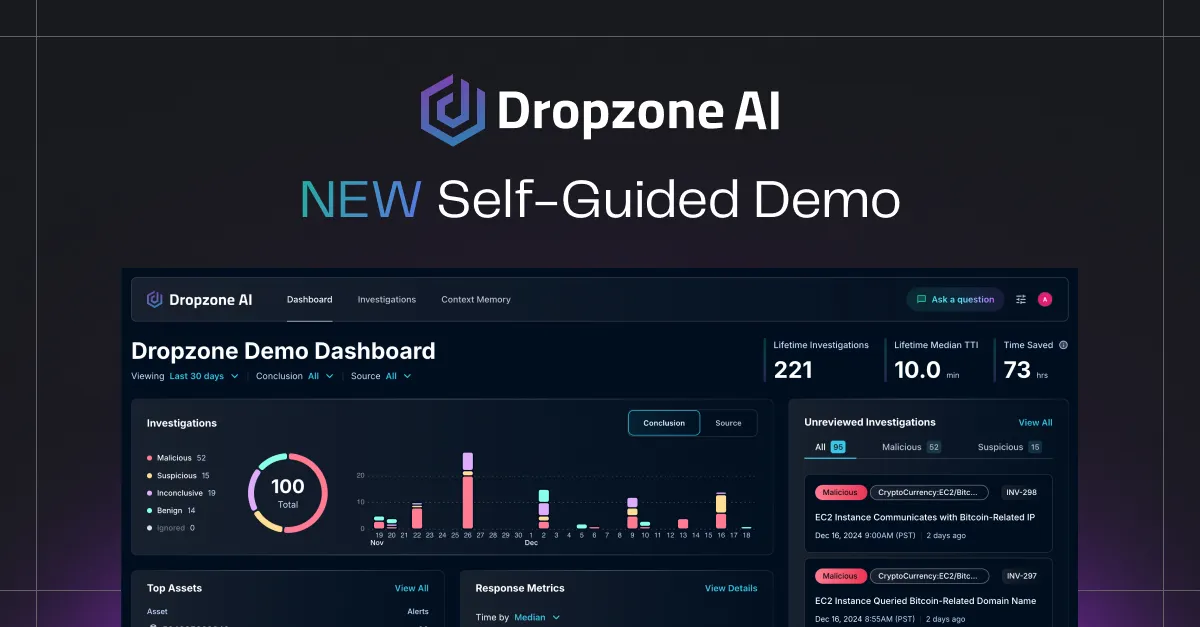Key Takeaways
- AI agents aren’t magic. They’re systems that need clear architecture to be reliable and scalable.
- Separating agent memory into distinct streams like hypotheses, evidence, and decisions improves reasoning, transparency, and debuggability.
- Structured outputs in formats like JSON or YAML make AI responses easier to review, integrate, and trust.
- Role specialization divides tasks among planner, researcher, synthesizer, and reviewer agents, which mirrors human workflows for better performance and accountability.
Quick Answer
Dylan Williams' AI design patterns turn unreliable AI experiments into dependable security tools through three core patterns: memory streams (separating hypotheses, evidence, and decisions), structured outputs (using JSON/YAML formats), and role specialization (dividing tasks among planner, researcher, synthesizer, and reviewer agents). These patterns help security teams build AI agents that work reliably in production.
Introduction
At Security Frontiers 2025, Dylan Williams delivered a talk that stood out not for practical guidance on how to build AI agents that actually hold up under pressure. His focus wasn’t on a single product or proof of concept but something deeper, the repeatable design patterns that turn brittle experiments into reliable systems.
As security teams rush to embed AI into their workflows, many start with isolated use cases or clever prompt chains. But those early wins often break down under real-world complexity. Dylan made the case that it’s not just what you build, but rather how you structure it. If we want AI agents to be trustworthy, explainable, and scalable, we must stop thinking about one-off scripts and start thinking in patterns.
Interested in seeing all the presentations? You can find them on this YouTube playlist.
Why Design Patterns Matter in AI Security Workflows
As AI continues to creep into security operations, many teams are still stuck in the early phase: one-off experiments, clever scripts, and scattered demos that solve a single problem but fall apart when pushed into production. The energy is there, but the structure often isn’t.
Dylan Williams addressed this head-on. In his view, the real bottleneck isn’t capability but consistency. Security teams don’t just need AI that works once. They need AI that works reliably, in different contexts, across different tasks, and under real operational pressure. That comes from design discipline, not just clever prompts.
Rather than treating every new AI project as a blank slate, Dylan encouraged teams to lean into repeatable design pattern frameworks that define how agents think, act, and respond. When those patterns are clear, agents become more predictable, explainable, and reusable. When they’re missing, everything becomes brittle.
It’s the same principle that matured traditional software engineering. And according to Dylan, it’s time to bring that same rigor to AI security workflows. When LLM agents follow a structured design, they don’t just perform better. They start to behave like reliable teammates.
Core Pattern #1: Memory Streams
One of the most foundational design patterns Dylan Williams shared was also deceptively simple: separating an agent’s memory into distinct streams. Rather than stuffing everything into a single prompt history or relying on generic context windows, Dylan showed how dividing an agent’s internal state into purposeful categories unlocks a new level of performance and reliability.
He broke it down into four core memory types:
- Hypotheses – What the agent currently believes might be true based on initial input
- Evidence – The data it’s gathered to support or challenge those hypotheses
- Decisions – The conclusions or actions it’s taken so far
- Long-term memory (optional) – Persistent facts or knowledge that should carry across sessions
This pattern gives agents something more powerful than a large context window. It gives them structure. With clear boundaries between what they’re guessing, what they’re seeing, and what they’ve already done, agents can reason more effectively and avoid circular logic or redundancy.
It also improves transparency. Security engineers can inspect each memory stream if something goes wrong and understand how the agent got from input to outcome. That simplifies debugging and builds confidence in both the tool and the process.
Core Pattern #2: Output Structuring
Dylan Williams made a strong case for paying attention to how agents respond to prompts, not just the prompts themselves. The second design pattern he outlined focused on output structuring, or teaching agents what to say and how to say it in a format other systems and humans can trust.
Rather than letting agents return free-form text or loosely formatted bullet points, Dylan encourages using predictable, typed formats like JSON or YAML. These formats force clarity. They eliminate ambiguity. Most importantly, they make the agents’ conclusions easy for humans and machines to parse.
This structure serves two major purposes. First, it enables clean integration with downstream tools. If an agent’s output is consistent and machine-readable, it can flow directly into dashboards, automation pipelines, or ticketing systems with minimal effort. Second, it makes human review dramatically simpler. Human analysts can more easily scan a structured response, verify key fields, and trust that nothing important is buried in a wall of prose.
By turning AI responses into structured records instead of vague summaries, Dylan’s pattern pushes agents one step closer to being operational teammates. It’s not just about what they know. It’s about how clearly they can communicate it.
Core Pattern #3: Role Specialization
Dylan Williams’ final design pattern brought a familiar concept into the world of multi-system agents: divide and conquer. Rather than building a single, monolithic agent to do everything, Dylan advocates for role specialization, where multiple agents each take on a specific function, mirroring how real teams work.
In his framework, a typical agent-based system might include:
- A Planner which outlines goals, subtasks, and logical sequencing
- A Researcher tasked with gathering relevant context, logs, or documentation
- A Synthesizer is responsible for drawing conclusions or generating responses
- A Reviewer ensures outputs are accurate, safe, and well-formed before delivery
This pattern doesn’t just improve performance. It adds accountability and interpretability. Each agent has a clear job, a defined scope, and an auditable trail of decisions. That makes it easier to troubleshoot, iterate, and perhaps most importantly, trust the outcome. Instead of stretching one model too far, you let each piece play to its strengths.
Lessons for Security Teams
Even though LLMs are probabilistic, Dylan Williams showed how you can ensure quality for production through these design patterns. Behind every reliable agent is a clear design. And behind every design is a set of intentional constraints that shape how the agent learns, behaves, and contributes to real-world work.
Dylan’s design patterns help turn experimental agents into dependable teammates. They don’t replace people. They extend them. A single analyst equipped with an agent built on these principles can triage faster, investigate deeper, and spend less time unraveling messy AI outputs. The takeaway for teams looking to scale without losing control is clear: treat your agents like systems, not shortcuts.
It’s Not Just the Model, It’s the Method
In a field where enthusiasm often outpaces execution, this message was refreshing. We need more than powerful models if we want AI to stick in security operations. We need better methods.
Whether you’re a startup building your first security assistant or an enterprise SOC looking to enhance triage, these patterns offer structure in a space that often lacks it. So here’s the challenge: pick one pattern, memory streams, structured outputs, or role specialization and try it. See what changes when your agent has just a bit more scaffolding. And if you’ve already started, share your pattern back. Security Frontiers was built on the idea of learning in public, and Dylan’s session reminded us that the most valuable thing we can share isn’t just code. It’s how we build.
Getting Started with AI Design Patterns
Start Small: Pick One Pattern
- Week 1: Implement structured output (easiest win)
- Week 2-3: Add memory stream separation
- Month 2: Introduce role specialization
Measure Success
- Track debugging time reduction
- Monitor integration success rate
- Measure analyst satisfaction scores















